
Nature Observations from the Conservancy – Fall 2021
DECEMBER 14, 2021
IN FAUNA CONSERVANCY
BY JUSTIN TAUS
As we prepare to turn the page on 2021, it’s time to highlight some of our findings from late summer and fall at our nature conservancy. With our bird species inventory now progressing through its fifth year, the more special and exciting it becomes to observe a species for the first time. Three new species were catalogued this summer and fall, bringing our total to seven for the entire year.
New species
As noted in our spring and summer blog earlier this year, we suspected that the great abundance of Gypsy Moth caterpillars this spring had attracted the Black-billed Cuckoo, which feeds on caterpillars, to the reserve. Once the caterpillars developed into moths in August, however, other rare visitors arrived to fill their stomachs. Several Scarlet Tanagers were observed at various locations, often seen chasing after Gypsy Moths, which only live for approximately one week after emerging from their cocoons. This whole experience exemplifies how an unusual abundance of a prey species can draw wildlife to new areas.

Black-billed Cuckoo
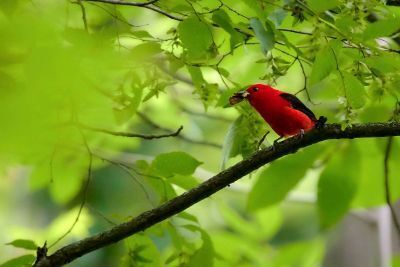
A male Scarlet Tanager eats a Gypsy Moth.
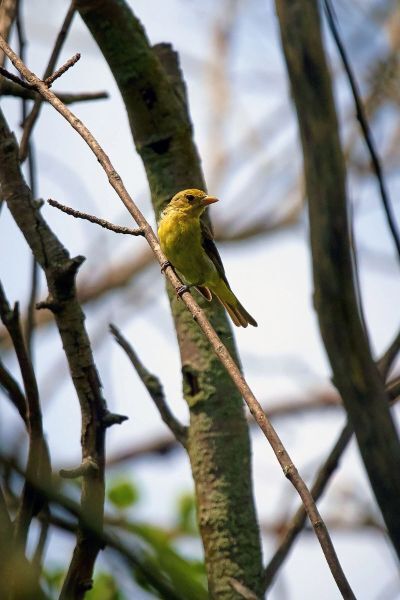
Female Scarlet Tanager
In late fall, it was the Bufflehead’s turn to make a migratory stopover on the lake! This was the first time we’ve noticed these small, charismatic diving ducks at the reserve. Buffleheads nest near lakes within the boreal forest in central Canada, then migrate towards saltwater bays along the Atlantic and Pacific coasts, where they spend their winters.

Male and female Buffleheads
Lastly, a Long-Eared owl made a quick appearance on its way to its wintering grounds. Although it was just a fleeting glimpse, it’s always exciting to notice a pair of big bright yellow eyes looking back at you through the trees!

Long-eared Owl
Other notable observations
As the leaves turned various shades of red and slowly fell to the ground, many usual fall visitors arrived to rest and feed. Hooded Mergansers were one of the first to arrive, and were later joined by Common Mergansers. Solitary sandpipers were present to forage around various shorelines, next to Black-crowned Night-Herons perched along low-hanging branches.
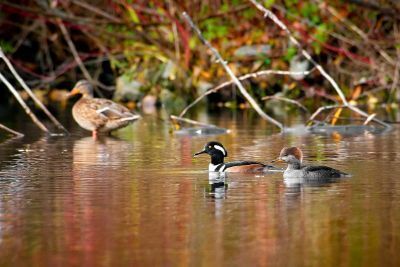
Hooded Mergansers

Common and Hooded Mergansers at the lake

Black-crowned Night-Heron

Solitary Sandpiper
Fox sparrows, a species we had noticed for the first time this spring, were seen again this fall, foraging in leaf litter on the forest floor. They were often seen with White-crowned and White-throated sparrows.

Fox sparrow
Rusty blackbirds, a species whose conservation status is determined to be of “Special Concern” by the Committee on the Status of Endangered Wildlife in Canada (COSEWIC), were also seen foraging in small flocks.
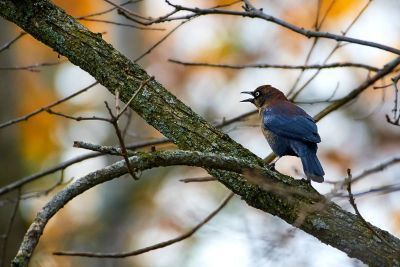
Rusty blackbird
Lastly, several warbler species were observed, with Common Yellowthroats, American Redstarts, Yellow-rumped warblers, Yellow warblers, Ovenbirds and Palm warblers being the most common.
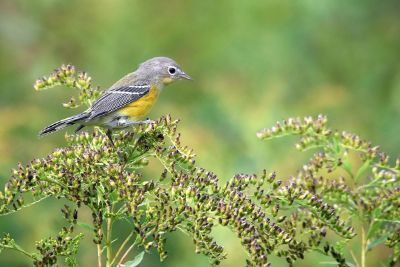
Magnolia warbler
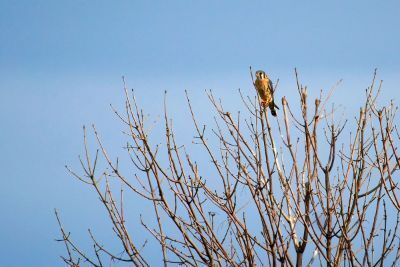
American Kestrel
Conclusion
This is but a small glimpse of the several dozen species that call the Ruisseau Robert Nature Conservancy home over the course of a year. 2021 has definitely reinforced the fact that seemingly small variables, like an abundance of a particular insect, can have great effects on which wildlife you’re likely to encounter. Stay tuned for more findings in the spring!

Justin Taus
Justin Taus is on the Caregiver team at Fauna Foundation. Justin holds degrees in both Education and Journalism from Concordia University in Montreal, Canada, where he specialized in photojournalism. He has reported from diverse regions of the world including the Amazon rainforest, the savannahs of Eastern Africa and the Alaskan Arctic. He has produced content for organizations like the Wildlife Conservation Society and the International League of Conservation Photographers as well as media outlets including Outdoor Photographer magazine, Vice and the CBC. Justin has been photographing the wildlife at Fauna since 2017.




